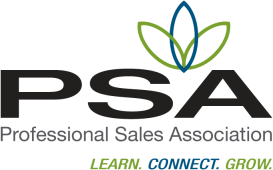It’s ‘game on’ in the virtual environment, as the world still hesitates to return to normal. Don’t worry, whenever norms and patterns get blow apart, it has a tendency to return to normal, but not necessarily the same normal that it was.
The new normal will emerge as a fusion, where everything we had pre-covid will return, virtual will remain, and hybrids will appear that mix live and virtual in new and to-be-invented ways.
 Virtual can’t go away, because businesses have experienced two profound benefits to counterbalance the limitations of remote meeting spaces. First, virtual business saves money, reducing travel and the associated hassle, and operational expenses. Secondly, it makes a more “borderless” market, as people get used to receiving professional services from locations that would previously be considered too remote.
Virtual can’t go away, because businesses have experienced two profound benefits to counterbalance the limitations of remote meeting spaces. First, virtual business saves money, reducing travel and the associated hassle, and operational expenses. Secondly, it makes a more “borderless” market, as people get used to receiving professional services from locations that would previously be considered too remote.
Therefore, as our three-dimensional world gets packaged inside a two-dimensional interface, there’s no greater boost to the sales professional who networks and develops business virtually, than to up their screen presence.
Former filmmaker turned sales coach spent an hour with PSA answering questions about how to turn the pressures and limitations of screen presence to our mutual advantage. Here are the highlights:
 PSA Questions and Answers
PSA Questions and Answers
Is there a polite way to get people to turn on their cameras?
The best thing you can do is invite people to turn their cameras on. You can’t make them, and for all the reasons that you feel uncomfortable being on camera, they may feel that as well and you don’t want to force them. What we say in sales scenarios is, “We’d love to be able to see you if we can, so we’d invite you to turn your cameras on if you’re willing. If not, that’s totally fine and we’ll do our best to create as connected an experience as we can.”
It’s helpful to ask yourselves, why do you need that? There may be other ways to experience their input, such as increasing your Q&A with them and being interactive to get their voice participation. Ultimately, your highest focus on the virtual platform is what you can give instead of what you would like to get —so give them your image, your energy, and your interest and assume it’s coming back even though you can’t always see it.
How do you stop one person who is dominating the conversation from the audience?
Successful meeting leads are doing two things that permit them to manage disruptions, ramblers, and meeting-time dominators. One thing we’re seeing is leaders establishing a moderator of the meeting — like the moderator of a panel discussion — who’s responsible for managing screen time, fairness and flow.
Also, they’re laying some ground-rules or guidelines for meetings. They’re asking people to sound bite and letting them know they will interrupt to maintain fair participation. They’re establishing goals such as “we’d like equal participation from everyone,” and bringing a lot of appreciation to the mix so if the moderator redirects someone, there’s no scolding or bruised feelings.
How do we do hybrid gatherings?
Hybrids are undiscovered country as the scenarios change around us. The simple advice is to ask people who’ve done them how they went about it and what they learned and look at each case individually until norms present.
One hybrid sales pitch I coached had people separated into rooms because of state regulations on room capacity. We had cameras between rooms, and there were virtual members both in prospect and seller’s teams. We spent a lot of time practicing alternating eye contact, so that about every third “eye-connection” was with one of the two cameras. We also paired people in both rooms to co-present (often with a third person from the remote team). This created more of a “one team” feeling across the broader group.
Other hybrid pitches included microphone wiping at the client’s request and there’s always different rules around masks, what materials you can bring in, and other factors will emerge that cannot be foreseen at this time. So, watch for 2021 to play a major role in shaping new norms.
What do you think of ppt vs white board? or just free speech like you are doing.
The quick answer is to think more like a “variety show” and abandon the search for the best answer. Television as long-since established that variety is useful to viewers, refreshing interest and attention. Also, as a presenter, the more versed you can be with the array of options the better.
As a live and virtual speaker, I have practiced alternating the same presentation with a slide show, as a discussion, using whiteboards, delivering virtually, and other ways to ween myself from needing or even preferring a specific presentation approach. That way you are ready for anything, and ready for anything to go wrong.
Where are your eyes focused with the camera? You like you are talking to me directly. Excellent
Thanks for the compliment. What I am doing is looking right into the camera, despite my instinct to look at the screen. I do this so that you experience my eye contact. It took a little practice to get used to this. I imagine you — interested in what I’m saying — as I present into the little glass lens. After some practice, I learned to track the cues in my blurry, lower periphery and I can see a nod, or a smile.
Feel free to cheat a glance or two as you talk. That’s just like checking your notes in a speech. Don’t talk to your notes, and don’t talk to your screen. This is taxing, but the theme here is this is your chance to give and you don’t need to get it back as much as you think you do.
There are cameras on flex-tubing that let you place it in front of the speaker, and eventually they will hide cameras in our computer screens. But I’m used to it now, and wherever the lens is, that is where I look, even when I’m listening.
Any recommendations on optimal lighting?
Optimal lighting is a soundstage. But anyone can follow the simple rules of lighting. I bought a ring light, but you can do this with lights around your house as well.
You want a main light source or “key light” above you and more or less in front of you, to light yourself like the sun does (above and slightly to one side or the other). Then fill with other lights. And maybe splash the background. I’d avoid backlighting yourself so your camera doesn’t turn you into a silhouette.
I like to stand at my desk, are there any downsides to this?
I like the sound of that. I stand a lot. My rule of thumb is to stand if I would have stood had we been in person. Standing shows authority and pays respect. Plus, it’s easier to move a little to portray a three-dimensional world.
I sit when I’m trying to create a “working session” feel, like a “knights of the round table” sort of thing. But in both cases, sitting or standing, I make the camera level with my face. I don’t want to puff myself up and overpower (camera looking up at me), and I don’t want to diminish myself (camera looking down on me). Level is usually better.
I use whiteboards, polling, etc. and I find that the tools act differently or even disappears at times. How can I find consistency?
Two answers: 1) Practice a lot and in different platforms so you’re simply good at troubleshooting these quirks. 2) Get a producer, and make it someone else’s problem, so that you can focus on connecting with your audience.
Are the rules of “presence” the same in all venues?
There are really three types of presence — professional presence, stage presence, and screen presence. I guess there’d be a fourth one too, which would be “off duty” presence.
The first three require “on” energy. Professional presence is all about being calm, normal, consistent, and focused on task. Stage presence is an amped-up version of that so that personality can be seen farther away. Screen presence is like stage presence, except that you’re in a perpetual closeup, so it’s all about sharing your authentic personality, as if the audience is right in front of you.
Paying attention to the differences will help adjust to the venue you’re facing. This simple rule is: Professional presence wants calm, determined focus, maintained indefinitely. Stage Presence is more dramatic, with pushed expressiveness to reach the back row. Screen presence is also dramatic, and about personality, but toned down with a little more casualness.
What kind of microphone and camera do you use?
SagePresence is committed to operating in a zone similar to it’s customers. There are advantages to investing in higher-end cameras, microphones and lights, but I am using my onboard camera and mic in my Apple MacBook Air. I might upgrade across 2021, or maybe not.
Any thoughts on using a headset with a microphone?
When the pandemic first hit, it was strange to see people in headsets. Now we’re all used to it so anything goes. My tendency is to go without because I’d rather look like a speaker than a radio announcer or helicopter pilot. But I’ve seen people look sharp in the lower profile, one ear, small-stick microphone setups. It can look kind of futuristic.
Also, any best practices on using multiple screens?
I don’t really care how many screens, or how many notes, they have. Just stick with the camera as where your eye-contact needs to be. Cheat glimpses to your screens in pauses and talk into the lens.
Any recommendations on an external camera that is not so wide-angle?
I would love nothing more than recording from a XLR with a proper lens so that I can control depth of field. I love the genuine background blur you can get with a narrow depth of field (that’s using a telephoto lens from the far side of the room so the background blurs). But I just use the fish-eye built-in and try not to let my hand-gestures get too close or my hands look huge. Few people invest in that sort of thing, but it’s great if you want to do that. I eventually might, but I need a large, devoted area to do that.
I’m seeing more with making a moment, using two cameras and switching cameras, what have you seen with this and experience? (like Trevor on Late Night)
I love that idea, but few are going to invest that much unless they do a lot of webinars. I think it’s entirely unnecessary, yet I might do it. The main reason people in television do that is so they can edit, and yes, the other reason is to provide variety. If you want to setup two cameras and have a switcher scenario, it’d be great. It will add a sense of polish but might also be strangely slick. I wouldn’t do that in a meeting, but I would do it in a presentation.
How do you create synergy with multiple speakers?
The simple method I use is “tag teaming.” If you can practice sound biting, listening to each other, and building off each other, the audience will see synergy. The key is not scripting and orchestrating but improvising. So, agree on a pile of talking points, but not who says what, and sound bite your way through the points. And establish rules, like “interrupter has the right of way” and suddenly your presentation has the casual energy of a dinner conversation, at least at points. The active listening as the message builds across presenters is what shows team synergy.
The Bottom Line
Dean’s final thoughts were to return to the basics — the bottom lines of screen presence. You want to be there for them, not yourself, and focus on what you can give them. And that is your presence, your warmth, your emotions, your team’s synergy and a commitment to build your stories around them, not yourself. Try to keep them the main character and focus on how you can get them from their problems to their goals. That makes you the hero of the story — the helping hero who is all about getting them to their goals.
